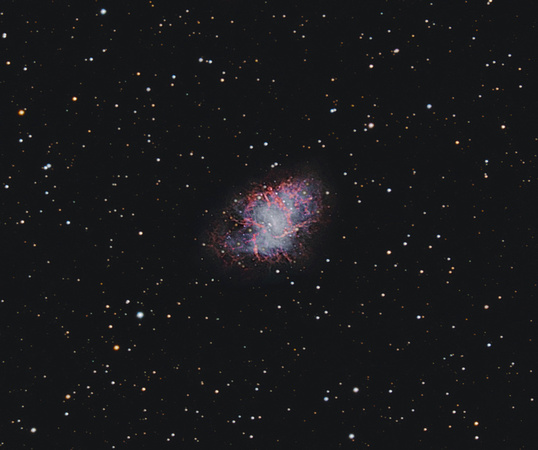Canon 350D Hap Griffin Baader Mod30x180sec at iso 1600
30 Darks/Flats/Bias
Celestron 9.25 reduced 0.6360% Crop
Astronomy Magazine Picture of the Day December 6, 2008 Yahoo Digital Astro Group December, 2008 Monthly Challenge Runner UpThe Crab Nebula (M1, NGC 1952, Sharpless 244, Taurus A [radio source]) is the best known and most prominent supernova remnant in the sky. It lies at a distance of 6500 light years and spans 11 light years across. It is expanding at the rate of 1500 kilometers per second.We all know the story of how a "new star" was first observed on July 4, 1054 A.D. by Chinese astronomers. The supernova was about four times brighter than Venus, or about mag -6. According to the records, it was visible in daylight for 23 days, and 653 days to the naked eye in the night sky.Remaining from the supernova explosion is the
Crab Pulsar - the first
pulsar found to have a visual component. This pulsar was first discovered in the radio range on November 9, 1968 by astronomers of the
Arecibo Observatory
300 meter radio telescope in Puerto Rico. This pulsar is a
rapidly rotating neutron star that
rotates at the rate of 30 times per second. The neutron star is an extremely dense object, denser than an atomic nucleus, concentrating more than one solar mass in a volume of 30 kilometers across and is 100,000 times more energetic than our sun. The pulsar can be seen as a mag 16 star in this image - the lower right and dimmer of the stars in the
double star at the center of the nebula.
October 28, 2008


